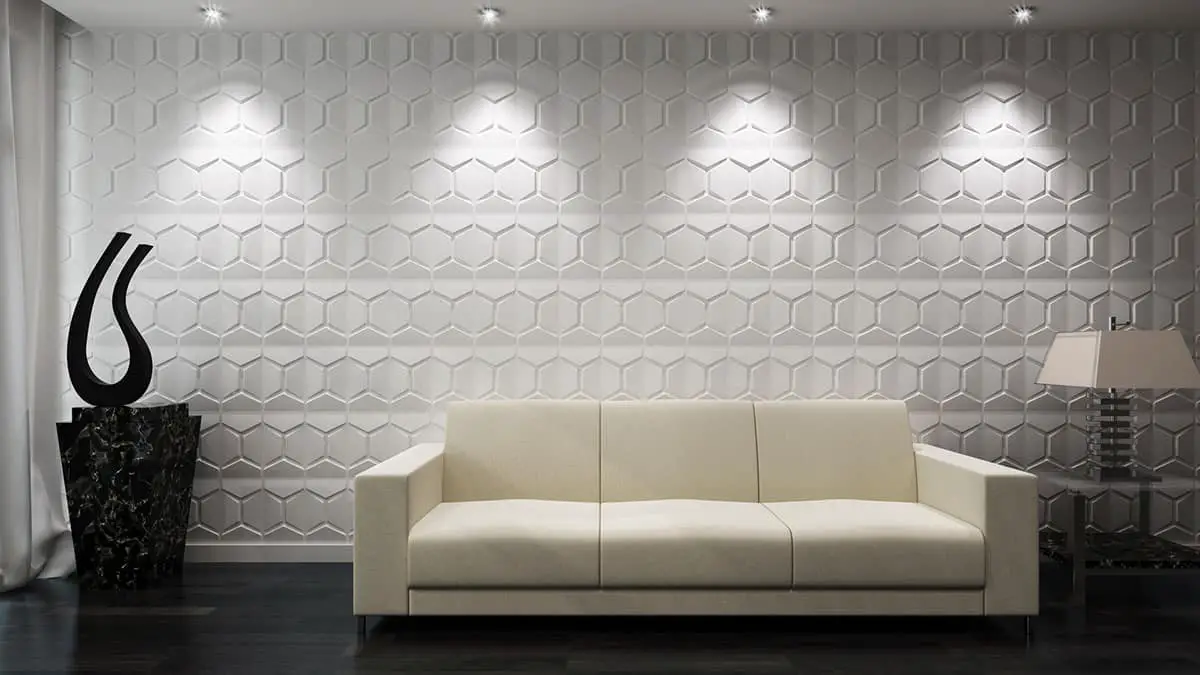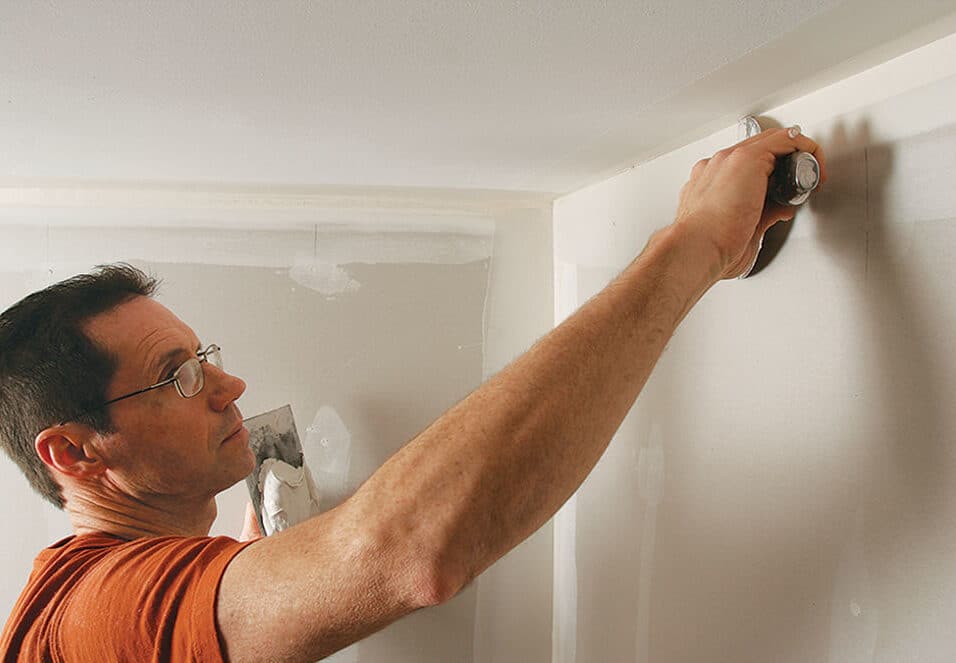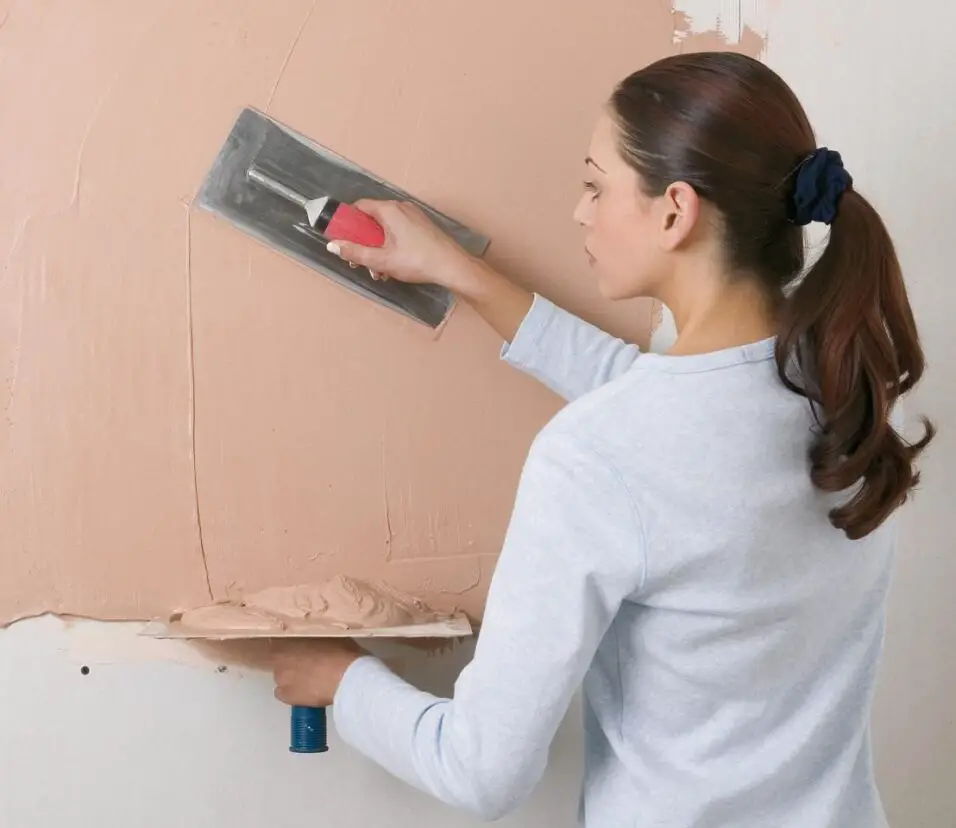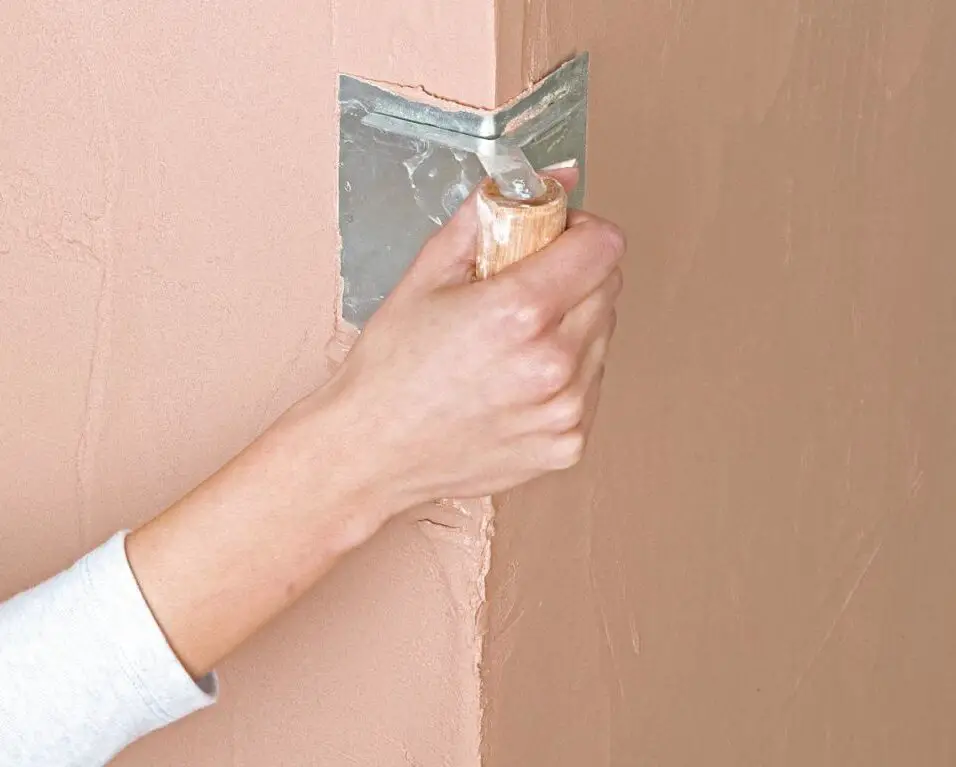How To Cut Wall Paneling
Introduction
How To Cut Wall Paneling: Wall paneling is a popular choice for homeowners looking to enhance the aesthetic appeal of their interiors. Whether you want to add a touch of elegance or create a rustic ambiance, wall paneling can transform any space. However, installing wall paneling requires precision and careful planning, especially when it comes to cutting the panels to fit your walls perfectly. In this article, we will guide you through the process of cutting wall paneling, providing you with step-by-step instructions to ensure a successful installation.
Before we delve into the cutting process, it is essential to understand the different types of wall paneling available in the market. From traditional wood paneling to modern PVC options, there is a wide range of materials to choose from. Each material has its unique characteristics and requires specific cutting techniques. Therefore, it is crucial to select the right type of wall paneling that suits your style and preferences.
Once you have chosen the perfect interior wall paneling material, the next step is to measure your walls accurately. Taking precise measurements is crucial to avoid any wastage or ill-fitting panels. Use a measuring tape to determine the height and width of each wall, accounting for any obstacles such as windows or doors. It is advisable to add a few extra inches to your measurements to ensure a seamless installation.
Measurements to ensure a seamless installation
Now that you have the measurements, it’s time to cut the wall paneling to the desired size. Depending on the material you have chosen, you will need specific tools for cutting. For wood paneling, a circular saw or a jigsaw with a fine-toothed blade works best. On the other hand, PVC paneling can be easily cut using a utility knife or a fine-toothed handsaw. Remember to wear protective goggles and gloves while cutting to ensure your safety.
Cutting wall paneling is a crucial step in the installation process. By selecting the right material, taking accurate measurements, and using the appropriate tools, you can achieve a flawless finish. In the following sections, we will provide detailed instructions on cutting different types of wall paneling, offering you valuable tips and tricks to make the process easier. So, let’s get started and transform your walls with beautiful and perfectly fitted paneling!

What is the best tool to cut paneling?
Table Saw. The table saw is a common tool in most workstations, and you can use it to cut panels. It is great when making cuts along the grain.
Paneling refers to the process of covering walls or ceilings with decorative wood or other materials. It is a popular choice for adding warmth and texture to a room. However, when it comes to cutting paneling, having the right tool is essential to achieve precise and clean cuts. There are several tools available in the market that can be used for this purpose, but the best tool for cutting paneling depends on various factors such as the type of paneling, the thickness of the material, and the desired outcome.
One of the most commonly used tools for cutting paneling is a circular saw. This versatile tool is capable of making straight cuts and can be adjusted to different angles, allowing for beveled or mitered cuts. When using a circular saw, it is important to choose the appropriate blade with fine teeth to minimize splintering and ensure a smooth finish. Additionally, using a straight edge or guide can help maintain accuracy and prevent the saw from wandering off course.
It is great when making cuts along the grain.
Another tool that can be used for cutting paneling is a jigsaw. This handheld power tool is ideal for making curved or intricate cuts. It features a thin, reciprocating blade that moves up and down rapidly, allowing for greater maneuverability. When using a jigsaw, it is important to select a blade with fine teeth to prevent tearing or chipping of the paneling. Additionally, using a clamp or securing the paneling to a workbench can help stabilize the material and ensure more precise cuts.
For smaller or more delicate paneling projects, a coping saw can be a suitable option. This hand tool consists of a thin, flexible blade stretched across a U-shaped frame. It is commonly used for cutting intricate shapes or curves in wood. When using a coping saw, it is important to take your time and follow the desired pattern carefully. The blade should be kept perpendicular to the paneling to ensure clean and accurate cuts.
The best tool to cut paneling depends on the specific requirements of the project. A circular saw is ideal for straight cuts, a jigsaw is suitable for curved or intricate cuts, and a coping saw is best for smaller or more delicate projects. It is important to choose the right tool and blade for the job to achieve precise and clean cuts. Additionally, taking necessary safety precautions and using appropriate protective gear is essential when working with power tools.
How do you cut paneling without splitting it?
Tip #1: Apply The Right Cutting Techniques
- Set the face of the paneling in the right direction.
- Cut along the grain.
- Apply tape to the cutting line.
- Start with a shallow cut.
- Use precision tools.
- Use a circular saw.
- Ensure that your tool is sharp enough.
- Table saw.
Introduction:
When it comes to cutting paneling, one of the main concerns is avoiding splitting. Paneling is a popular choice for interior walls and ceilings, as it adds a decorative touch and can help improve insulation. However, if not cut properly, paneling can easily split, leading to a less-than-desirable result. In this guide, we will explore some techniques and tips to help you cut paneling without splitting it.
Understanding the Material:
Before diving into the cutting process, it is important to understand the nature of the paneling material. Paneling is typically made from wood or engineered wood products, such as medium-density fiberboard (MDF). These materials can be prone to splitting if not handled correctly. Therefore, it is crucial to approach the cutting process with care and precision.
Choosing the Right Tools:
Using the right tools is essential for cutting paneling without splitting it. A sharp saw with fine teeth, such as a circular saw or a jigsaw, is recommended for this task. The fine teeth will help minimize the risk of splitting by making clean and precise cuts. Additionally, using a blade with a lower tooth count can also reduce the chances of splitting, as it removes less material with each cut.
Measuring and Marking:
Prior to cutting the paneling, accurate measurements and markings are crucial. Use a measuring tape and a pencil to mark the desired dimensions on the paneling surface. It is advisable to double-check the measurements to ensure accuracy. To prevent splitting, make sure to leave a small gap between the marked line and the actual cut line. This will allow for any slight variations in the cutting process and reduce the risk of splitting.
Techniques for Cutting:
When it comes to cutting paneling, there are a few techniques that can help minimize the chances of splitting. One effective method is to score the cut line before making the actual cut. This can be done by running a utility knife along the marked line, creating a shallow groove. This groove will guide the saw blade and help prevent the paneling from splitting. Additionally, cutting at a slower speed and applying gentle pressure can also reduce the risk of splitting.
By following these techniques and using the right tools, you can successfully cut paneling without splitting it. Remember to always prioritize safety and take your time to ensure accurate and clean cuts. With practice and patience, you will be able to achieve professional-looking results and enhance the beauty of your interior spaces.
Is wall panel easy to cut?
Easy-to-cut options such as PVC wall panels are much easier to cut and so it’s possible to choose from a variety of tools. Some people simply use a stanley knife. This can achieve a very clean cut when used with a straightedge, however it needs to be done on a flat surface with a sharp enough blade.
Wall panels are a popular choice for interior decoration due to their versatility and ease of installation. One common question that arises when considering wall panels is whether they are easy to cut. In this article, we will explore the process of cutting wall panels and discuss the factors that contribute to their ease of cutting.
Wall panels are typically made from a variety of materials, including wood, PVC, and MDF. The ease of cutting these panels depends on the material used. For example, wood panels can be easily cut using a saw, while PVC and MDF panels may require specialized tools such as a jigsaw or a circular saw. It is important to choose the right tool for the specific material to ensure a clean and precise cut.
When cutting wall panels.
It is essential to take accurate measurements and mark the cutting lines before starting the process. This will help ensure that the panels fit perfectly into the desired space. Using a measuring tape and a pencil, mark the dimensions on the panel’s surface, taking into account any openings for electrical outlets or switches.
Once the cutting lines are marked, it is time to proceed with the actual cutting. It is recommended to wear safety goggles and gloves to protect yourself during this process. If using a saw, make sure to follow the manufacturer’s instructions and use the appropriate blade for the material being cut. Take your time and make slow, steady cuts to avoid any mistakes or accidents.
After the panels are cut, it is important to sand the edges to ensure a smooth finish. This can be done using sandpaper or a sanding block. Sanding will remove any rough edges or splinters, giving the panels a professional look. Additionally, it is advisable to apply a sealant or paint to the cut edges to protect them from moisture and prolong their lifespan.
In conclusion, cutting wall panels can be a relatively easy task if the right tools and techniques are used. The ease of cutting depends on the material of the panels, with wood being the easiest to cut. Accurate measurements, proper marking, and safety precautions are crucial during the cutting process. Remember to sand the edges and apply a protective finish to ensure a polished and long-lasting result. With the right approach, cutting wall panels can be a straightforward and rewarding DIY project.
What is the cheapest way to panel a wall?
The best way to panel the walls in your home on a budget is to invest in an mdf wall panel kit. This clever product makes the process quicker and easier. Plus it’s not harsh on the purse strings either.
Introduction:
When it comes to paneling a wall, finding the cheapest way is often a top priority for many homeowners. Paneling not only adds a decorative touch to a room but also helps to protect the walls from wear and tear. However, the cost of materials and installation can quickly add up, making it essential to explore budget-friendly options. In this article, we will discuss several affordable ways to panel a wall, allowing you to transform your space without breaking the bank.
Option 1: Painted Paneling
One of the most cost-effective ways to panel a wall is by using painted paneling. This method involves installing inexpensive plywood or MDF panels on the wall and then painting them to achieve the desired look. By opting for affordable materials and doing the painting yourself, you can significantly reduce the overall cost. Additionally, painted paneling offers versatility, as you can choose any color or finish to match your room’s aesthetic.
Option 2: Wallpaper Paneling
If you prefer a more textured or patterned look, wallpaper paneling is an excellent choice. This option involves applying wallpaper to the wall in panel-like sections, creating the illusion of paneling without the need for expensive materials. Wallpaper comes in a wide range of designs and prices, allowing you to find an affordable option that suits your style. Additionally, wallpaper paneling is relatively easy to install, making it a DIY-friendly project.
Option 3: Reclaimed Wood Paneling
For those seeking a rustic or eco-friendly aesthetic, reclaimed wood paneling is a fantastic option. This method involves using salvaged wood from old barns, pallets, or other sources to create a unique and affordable paneling solution. Reclaimed wood not only adds character to a room but also helps reduce waste and promote sustainability. While the cost of reclaimed wood may vary depending on availability, it is often more affordable than purchasing new wood panels.
Option 4: Beadboard Paneling
Beadboard paneling is a classic and budget-friendly option that adds a timeless charm to any space. This type of paneling consists of narrow, vertical planks with a distinctive groove, creating a visually appealing texture. Beadboard panels are typically made of MDF or plywood, making them affordable and easy to install. Whether you choose to paint or stain the beadboard, it can instantly elevate the look of your walls without breaking your budget.
Paneling a wall doesn’t have to be an expensive endeavor. By considering options such as painted paneling, wallpaper paneling, reclaimed wood paneling, or beadboard paneling, you can achieve a stylish and affordable transformation. Each of these methods offers unique benefits and allows you to personalize your space while keeping costs in check. So, go ahead and explore these budget-friendly options to find the perfect way to panel your wall without breaking the bank.
Can you cut PVC wall panels?
The best way to panel the walls in your home on a budget is to invest in an mdf wall panel kit. This clever product makes the process quicker and easier. Plus it’s not harsh on the purse strings either.
Can you cut PVC wall panels?
PVC wall panels are a popular choice for homeowners looking to enhance the aesthetics of their interiors. These panels are not only visually appealing but also offer several practical benefits.
Why would you need to cut PVC wall panels?
There are several reasons why you might need to cut PVC wall panels. Firstly, not all walls have standard dimensions, so cutting the panels ensures a perfect fit. Additionally, if you have obstacles such as electrical outlets or switches on the wall, cutting the panels allows you to accommodate these features seamlessly. Moreover, if you are installing PVC wall panels in a room with sloped or uneven walls, cutting the panels can help you achieve a smooth and professional-looking finish.
How to cut PVC wall panels?
When it comes to cutting PVC wall panels, there are a few methods you can use. One option is to use a circular saw with a fine-toothed blade specifically designed for cutting PVC. This method provides clean and precise cuts. Another option is to use a jigsaw with a fine-toothed blade, which allows for more intricate cuts and curved edges. It is important to wear safety goggles and gloves when cutting PVC wall panels to protect yourself from any flying debris.
PVC wall panels can be cut to fit specific dimensions, making them a versatile option for any space. Whether you need to accommodate obstacles or achieve a seamless finish on uneven walls, cutting PVC wall panels allows for a customized and professional installation. Remember to use the appropriate tools and safety gear when cutting PVC panels to ensure accurate and safe results.
When it comes to cutting wall paneling, there are several methods you can use depending on the type of paneling and the desired outcome. One common method is using a circular saw with a fine-toothed blade. This allows for straight and precise cuts, especially when cutting larger panels. Another method is using a jigsaw.
which is great for cutting curves or intricate designs on the paneling.
If you prefer a more manual approach, you can also use a hand saw or a paneling saw. These tools are suitable for smaller projects or when you need more control over the cut. Additionally, a utility knife can be used to score the paneling before snapping it along the scored line, which is particularly useful for thin or lightweight paneling materials.
It’s important to choose the appropriate cutting method based on the type of paneling you’re working with and the specific cut you need to make. Always remember to wear protective gear, such as safety goggles and gloves, and follow the manufacturer’s instructions for the tools you’re using to ensure a safe and accurate cut.
What tools are required to cut wall paneling?
When it comes to cutting wall paneling, having the right tools is essential to ensure a clean and precise cut. Here are some of the tools you will need:
1. Circular Saw: A circular saw is a versatile tool that can be used to cut through wall paneling. Make sure to use a fine-toothed blade to minimize splintering and achieve a smooth cut.
2. Jigsaw: A jigsaw is another handy tool for cutting wall paneling, especially when dealing with intricate designs or curved cuts. It allows for greater control and precision.
3. Table Saw: If you have a large amount of wall paneling to cut, a table saw can be a time-saving option. It provides a stable surface and allows for straight and accurate cuts.
4. Utility Knife: A utility knife is useful for scoring the surface of the wall paneling before making the final cut. This helps prevent splintering and ensures a cleaner edge.
5. Measuring Tools: To ensure accurate measurements before cutting wall paneling, you will need measuring tools such as a tape measure, ruler, or combination square. These tools will help you mark the correct dimensions and angles for precise cuts.
Remember to always wear appropriate safety gear, such as safety goggles and gloves, when using these tools. Additionally, it is important to read and follow the manufacturer’s instructions for each tool to ensure proper usage and minimize the risk of accidents.
Are there any safety precautions to consider while cutting wall paneling?
When cutting wall paneling, it is crucial to prioritize safety to prevent accidents and injuries. Here are some important safety precautions to consider:
1. Wear protective gear: Before starting any cutting work, make sure to wear appropriate protective gear such as safety goggles, gloves, and a dust mask. This will protect your eyes, hands, and respiratory system from potential hazards like flying debris and dust particles.
2. Use the right tools: Ensure that you have the correct tools for cutting wall paneling, such as a circular saw or a jigsaw with a fine-toothed blade. Using the wrong tools can lead to inefficient cuts and increase the risk of accidents. Always follow the manufacturer’s instructions for the tools you are using.
3. Secure the paneling: This will help you maintain control over the tool and ensure accurate cuts.
4. Plan your cuts: Take the time to plan your cuts and mark the paneling accurately before starting. This will help you avoid unnecessary mistakes and reduce the chances of accidents. Measure twice and cut once to ensure precision.
5. Work in a well-ventilated area: Cutting wall paneling can generate a significant amount of dust and debris. It is important to work in a well-ventilated area or use a dust extraction system to minimize the inhalation of harmful particles. This is especially important if you are cutting paneling made of materials like MDF or plywood, which can release toxic fumes when cut.
By following these safety precautions, you can minimize the risks associated with cutting wall paneling and ensure a safe and successful project.
How can I ensure accurate measurements before cutting wall paneling?
Ensuring accurate measurements before cutting wall paneling is crucial to achieve a professional and precise result. Make sure to measure twice to minimize the chances of errors. Additionally, marking the measurements with a pencil or a marker can help provide a clear guide for cutting.
Another important consideration is to account for any obstacles or irregularities on the wall surface. Take note of electrical outlets, switches, or any other fixtures that may affect the placement of the wall paneling. It is advisable to measure and mark these areas separately to ensure accurate cuts and a seamless installation.
Furthermore, using a straight edge or a level can greatly assist in achieving accurate measurements. Align the straight edge or level with the marked measurements to ensure they are perfectly straight and level. This will help avoid any uneven or crooked cuts that can negatively impact the overall appearance of the wall paneling.
Are there any specific techniques or tips for achieving clean and precise cuts on wall paneling?
When it comes to achieving clean and precise cuts on wall paneling, there are a few techniques and tips that can greatly improve the quality of your work. One important technique is to use a sharp and fine-toothed saw blade specifically designed for cutting paneling. This will ensure smooth and accurate cuts, minimizing the risk of splintering or damaging the paneling.
Another technique is to measure and mark the cutting line carefully before making any cuts. Use a measuring tape and a pencil to mark the exact dimensions on the paneling, ensuring accuracy. To prevent the paneling from splintering, you can also apply masking tape along the cutting line. This will help to stabilize the wood fibers and create a cleaner cut.
Additionally, it is crucial to maintain a steady hand and a controlled cutting speed. Rushing the cutting process can lead to uneven cuts and mistakes. Take your time and make slow, deliberate cuts, allowing the saw blade to do the work. Applying too much pressure or forcing the saw can result in jagged edges and imprecise cuts.

Conclusion
By following the instructions provided, individuals can successfully cut wall paneling to fit their desired dimensions and create a seamless and professional-looking finish. Whether you are a DIY enthusiast or a professional contractor, these steps can serve as a helpful guide to ensure accurate and precise cuts.
First and foremost, it is essential to gather the necessary tools before beginning the cutting process. This typically includes a measuring tape, a pencil or marker for marking the paneling, a straight edge or level for creating straight lines, and a saw suitable for cutting through the chosen material. It is crucial to select the appropriate saw for the job, as different types of paneling may require different cutting tools.
Finally, it is time to cut paneling. Using the appropriate saw, carefully follow the marked lines to make the cuts. It is crucial to maintain a steady hand and apply even pressure to ensure clean and accurate cuts. If the paneling is particularly thick or dense, it may be necessary to make multiple passes with the saw to achieve the desired depth.
By gathering the necessary tools, measuring accurately, marking the paneling, and making precise cuts, individuals can achieve a professional-looking finish. Whether you are installing paneling for a home renovation project or a commercial construction job, these instructions can serve as a helpful guide to ensure successful results. With a little patience and attention to detail, cutting wall paneling can be a straightforward and rewarding process.








